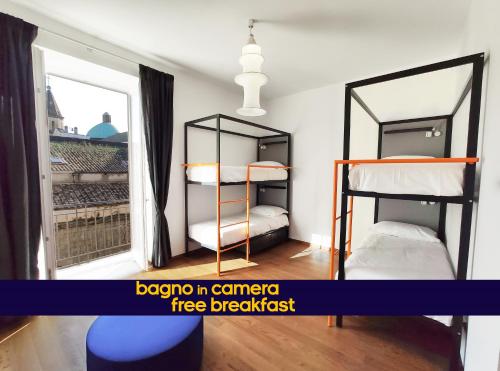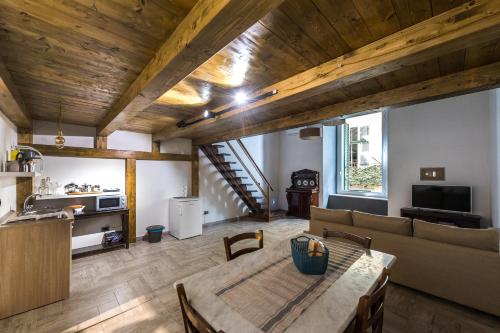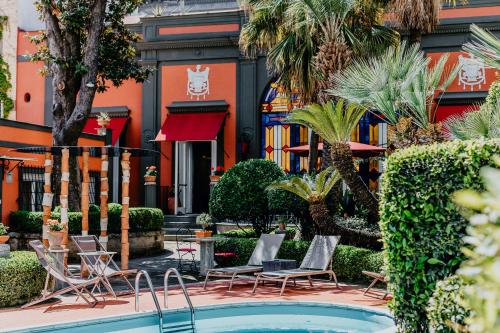What is the largest palace in the world?
You might think it should be an easy question – but it’s actually quite complicated. It depends on how you define it.
If you’re talking about the main building plus the grounds, then the Palace of Versailles in France takes the title. But if you think the ground needs to be enclosed within a wall, then it’s the Summer palace near Beijing in China that takes top spot.
Some people judge it by floor space. In that case, the Palace of the Parliament in Bucharest in Romania is the largest. If you restrict the floor space definition to ‘royal’ sites, then it’s the Royal Palace of Madrid in Spain.
So where does Royal Palace of Caserta near Naples in Italy fit into all of this?
It often claims to be the largest palace in the world – but by what definition?
Well, it turns out Caserta Palace is the largest in the world by volume. In other words, taking into account not just the floor space but the height as well.
What is Caserta Palace?
Caserta Palace is an enormous royal home built from 1752 by the House of Bourbon on the edge of Naples. It’s one of the largest palaces in the world, with about 1200 rooms, and is also significant for its huge park that stretches up the side of a hill.
Is Caserta Palace bigger than Versailles?
It’s often claimed that Caserta Palace is the largest palace in the world, but it depends what definition is used. Caserta Palace is the largest by volume of the building, but the Palace of Versailles is the largest if you consider the area of the main building and its grounds.
Is it worth visiting Caserta Palace?
Caserta Palace is one of the best sights around Naples and can easily be done by car or public transport. It’s worth visiting Caserta Palace to see the large and ornately-decorated rooms in the Royal Apartments, but Caserta Park is also a highlight and shouldn’t be missed.
The enormous size is just one thing you’ll notice when you visit Caserta Palace.
In its attempt to rival Versailles (and the other grand palaces of the 18th century) the House of Bourbon created a richly decorated site, where each room is filled with treasures. It’s in these apartments that you’ll find some of the most impressive parts of the building.
A wonderful option when you visit is this guided tour of Caserta Palace, which is great value and really interesting!
I think visiting Caserta Palace is one of the most interesting day trips from Naples, and I would certainly recommend leaving enough time to walk through its park as well, which I’ll discuss in a moment.
The history of Caserta Palace
Arriving at Caserta Palace, the volume of the building is not immediately obvious. The facade is large – and prominent because of all the empty space in front of it – but it doesn’t give away the true size hidden behind.
It’s only when you go through the front gates that the scale is revealed. The palace is built like a grid with four outer wings and then two internal wings that cross in the middle, forming four enormous courtyards.
The size is no coincidence. Caserta Palace was built by the Bourbon Kings of Naples in the 18th century. At this point in history, the House of Bourbon – which ruled many of the great European powers over the centuries – had the wealth (and the ego) to build something this grand.
In 1752, construction began on Caserta Palace or King Charles VII of Naples. He had expressly asked for something that was modelled in the Palace of Versailles in France – only bigger!
The Royal Apartments at Castera Palace
Although the Palace of Versailles was used as inspiration, the general architecture is quite different and, if you looked at it from the outside, you wouldn’t see too much resemblance.
The similarities come in two main ways – the first of them being an interior designed to overwhelm.
To get into the Royal Apartments to see the inside of Caserta Palace, you first have to walk up an enormous flight of steps called the Grand Staircase of Honour. The amount of marble is astonishing, and it has large statues and a painted dome.
Although the staircase is considered to be one of the highlights of Caserta Palace, it is just an appetiser for the rest of the tour. As you go through, room by room, the opulence is disorienting.
There are the enormous antechambers with chandeliers and painted ceilings. You’ll then come through to the Throne Room, long and high, covered in gold, with the throne at the far end.
As you go through bedrooms and other private spaces, the rooms become smaller but no less ornately-decorated – there are gaudy light fittings, paintings, sculptures, stucco and frescoes.
It can take a while to walk through and see the Royal Apartments at Caserta Palace – although not quite as long as I expected.
You see, the building has five floors and 1200 rooms! However, the section that is open to the public is only a fraction of that – about one quarter of one floor.
The Park at Caserta Palace
To see Caserta Palace properly, you also need to see the park – and it could easily take longer to explore than the main building. If you thought the palace was large, the park will really impress you with its size.
From the rear of the palace building, the park stretches out into the distance, a long line towards and then up a hill. From the palace to the end of the park is almost three kilometres long!
The first part of Caserta Park consists of large lawns with a thin forest on the edges. Statues are spaced around the edge, half-hidden in the foliage, looking inwards.
If you were to venture along one of the paths into the forest, you’ll find a pond or small buildings.
The main element of the park follows the straight line that stretches outwards – a seemingly-limitless water feature. Water flows slowly down the long thin pools until it hits fountains or falls and cascades over into the next.
To explore it, you can walk (or jog) or hire a bicycle. There is also a bus that will take you to the far end (and back), if you prefer.
Is Castera Palace like Versailles Palace?
The park is the other way that Caserta is like Versailles. Because what the Bourbon Kings created here is more than just a royal palace. It’s effectively a new city.
The reason this site was chosen, 30 kilometres inland from Naples was intentional. It was designed to be away from the coast so it could not be attacked from the sea. And it was also to make it peaceful and efficient away from the political strife and chaos of Naples.
Around the palace a city was developed to accommodate the palace’s workers and all the bureaucracy of the government. Other industries were also moved here to give this new city its own economy, to help make it sustainable for the families that would call it home.
And so, much like Versailles, there was a new centre of power in the kingdom with its own army and commercial prospects, easier to defend and easier to rule from. It added yet another layer of grandeur to the palace.
Visiting Caserta Palace
One of the things that surprises me when I visit Caserta Palace is why it is not more famous.
Sure, lots of tourists come here and it can get crowded in busy periods – but you won’t find anything like the queues at the Palace of Versailles.
I also get the feeling that an average person may never have even heard of it… and the same can’t be said for its French counterpart.
If you’re planning to visit Caserta Palace, it’s an easy day trip from Naples with a direct train that stops right in front of the main entrance.
I would suggest going a little later in the day to avoid the tour groups that tend to come first thing in the morning.
To learn more about what you’re seeing and get a deeper insight into Caserta, I definitely recommend this guided tour of the palace, which is great value and really interesting.
There are some other options that offer slightly different packages, perhaps with transport from Naples or an audioguide. You can see the top ones here:
However you go, give yourself at least a few hours to wander through the Royal Apartments at your own leisure and then explore the park.
If you want to visit independently, I’ve got a bit more information here to help your planning.
Where is Caserta Palace?
Caserta Palace is about 30 kilometres north of the centre of Naples. The official address is Viale Douhet, 2/a, 81100 Caserta. You can see it on a map here.
How do you get to Caserta Palace?
The easiest way to get to Caserta Palace by public transport is on the train. There is a direct train from Napoli Centrale that takes about 45 minutes and costs €4. You can check the timetable here.
When is Caserta Palace open?
Caserta Palace is open from Wednesday – Monday but is closed on Tuesday.
The Royal Apartments are open from 08:30 – 19:30 with the last admission at 18:15.
The park opens at 08:30 all year but closes at different times (with the last admission an hour before closing time).
In January, it closes at 15:00.
In February, it closes at 15:30.
In March, it closes at 16:00.
From April – September, it closes at 18:00.
In October, it closes at 17:00.
In November December, it closes at 15:00.
In December, it closes at 14:30.
How much does it cost to visit Caserta Palace?
Admission to the Royal Apartments and Caserta Park costs €19 for a regular ticket and €3 for a concession.
You can also get admission for just the park or just the palace, which is €10 for a regular ticket and €3 for a concession.
There’s more information at the palace’s official website.
Visiting the Royal Palace of Caserta from Naples is worth the time that it takes. It’s one of the most magnificent European palaces that you’ll see and worthy of its title as the largest palace in the world (sort of).
THE BEST ACCOMMODATION IN NAPLES
I’ve got lots of tips about where to stay in Naples in another article or have a look at some of the highlights below.
BACKPACKER

The bunk beds are fairly standard, but Tric Trac Hostel has a fun modern feel and a great breakfast.
APARTMENT

A large apartment with a cool design, Casa Calu makes a great base if you’re staying a while
BOUTIQUE

Like an oasis in the middle of the city, Costantinopoli 104 is set within a gorgeous 19th-century villa with a pool.
LUXURY

It doesn’t get much more luxurious than the Britannique Hotel, with fabulous suites and panoramic views.
Finding and measuring those qualifications seems tiring Michael LOL. I do dig the different aspects of the biggest palaces on earth though. Quite inspired stuff. Seeing the scale of these places amazes me. To think when some of these buildings were designed and created….mind-boggling.
Ryan
OMG those places are beyond gorgeous!
Wow, this is awesome! The pictures are just incredible and I would love to visit. Plan to go to Naples in the next year so this is super helpful post!
Such a great adventures you shared! Beautiful photographs! Stunning post! You shared awesome experience. Thank you!
Keep posting..
Thank you! This is the most comprehensive review with the absolute best links for visiting this site! I’ve been gathering info to plan my visit, but with your help I have it scheduled and booked for September…can’t wait!
Oho God, these places are so beautiful, once in a lifetime everyone have to see these places.
Should the sentence with “Caserta Palace or King Charles VII” use for instead of or?
I plan to stay a night, a day trip is not good enough for me. Is there a local tour guide or group would you recommend? Thanks!
As an avid lover of history, architecture, and all things grand, stumbling upon this captivating article about the largest palace in the world was an absolute delight! The opulence and magnificence showcased by these architectural wonders never fail to leave me awestruck.
It’s fascinating to learn that the title of the largest palace is somewhat subjective, considering the diverse criteria used to measure size. However, the exploration of these magnificent structures, each with its unique charm, is an adventure in itself.
One such extraordinary palace that immediately comes to mind is the Palace of Versailles, nestled in the serene outskirts of Paris. Its grandeur knows no bounds, and the vastness of its exquisite gardens and intricate architectural details truly set it apart. Walking through the Hall of Mirrors, one can almost feel the weight of history in the air, as if the walls themselves are whispering stories of bygone eras.
Another palace that commands attention is the Potala Palace in Lhasa, Tibet. Perched atop the Red Hill, it exudes an aura of spiritual tranquility.